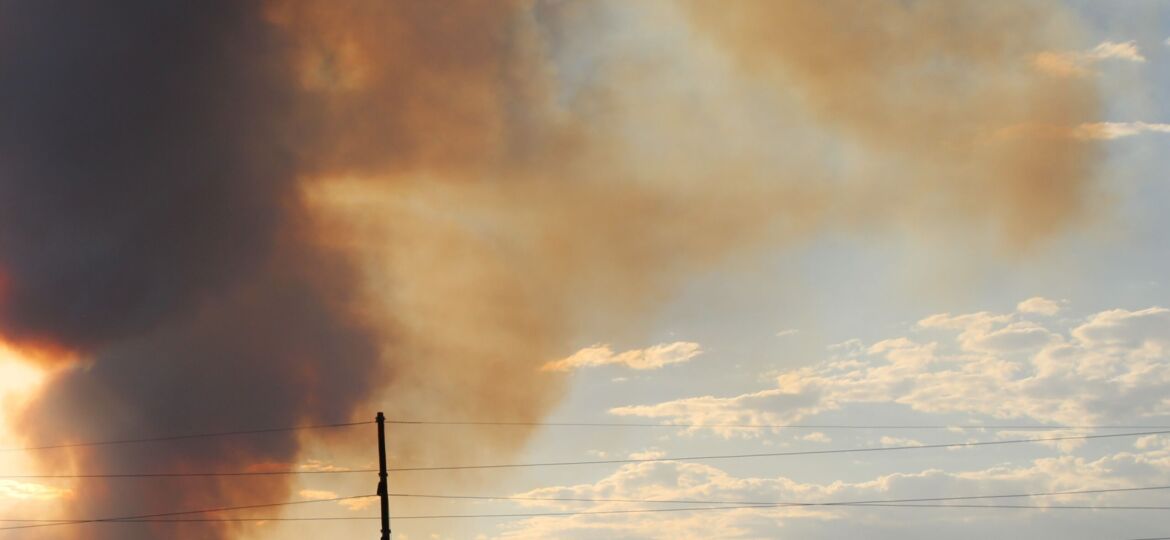
Attributes and Effects of Western United States’ Wildfires
Western United States’ wildfires continue to break records in 2020. Haze and plumes of smoke are a regular sight in the mountains on both sides of the Continental Divide. Drought conditions, pine and spruce beetle kill are attributing to the disasters while the effect on human health and security is evident.
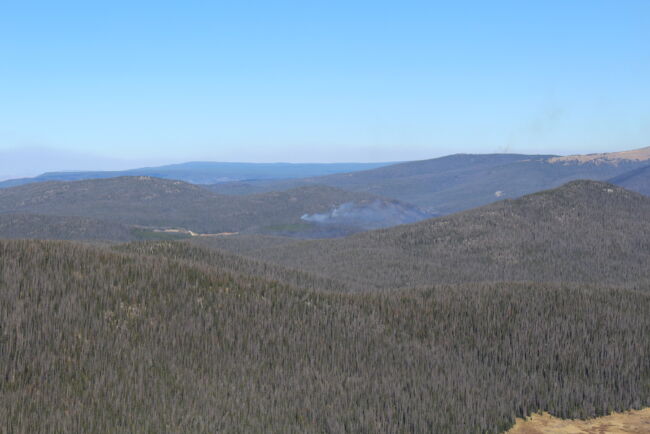
Colorado has a large supply of pine and spruce beetle kill in the mountains, although not the only attributing factor of the fires. Some businesses, nonprofits and government agencies have taken proactive stances to address the fuel sources and prevent fires, while others are allegedly on defense.
Charles Andrews, a Front Range homeowner and reservoir stakeholder, observed the effect of this summer on his irrigation supply. “Mid-June, the reservoir was completely full,” Andrews said. “But the temperature has been so high, and we have had so little precipitation that the evaporation loss has been staggering. We have a level now that is approaching 2004, when we had severe drought conditions.”
Andrews lives in an area with a high risk of wildfires due to beetle kill while having fires within miles of his house during his residency. “Individual property owners do their own fire mitigation. Some of us are on top of that, I am someone who is much less on top of it,” Andrews said. “If you don’t feel at risk [of wildfires] you’re an idiot.”
“My house was built 30 years ago, all those logs were western slope pine beetle kill logs,” Andrews said. “The forest service did a huge amount of mitigation after [prior fires in the area] and they had piles on the ground for years […] They did clear cut areas which are wildly controversial.”
Andrews notes some species are adapting to handle the fungus caused by the beetles near his property. Lodgepole pine, ponderosa pine and Engelmann spruce beetle kill are characterized by a blue ring of fungus in the sapwood of a trunk typically endemic of Rocky Mountain riparian, subalpine and montane ecosystems. The fungus protects the beetles against the resin, which would kill the beetles, with the fungus, not the beetles, killing the trees.
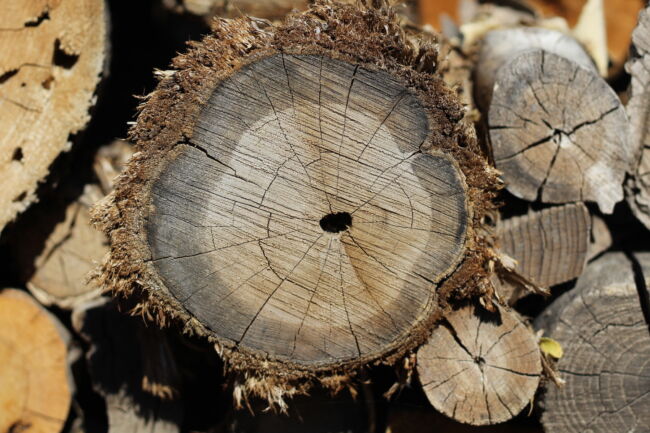
Beetle kill is a misnomer. The beetles lay larvae in bark, eat the fungus for their whole lifespan and may proceed to other trees; spreading the fungus. The Anthropocene enables larger amounts of pine and spruce beetle larvae to survive due to warmer winters. Burned lodgepole pinecones reproduce. Spruce takes longer to recover from fires.
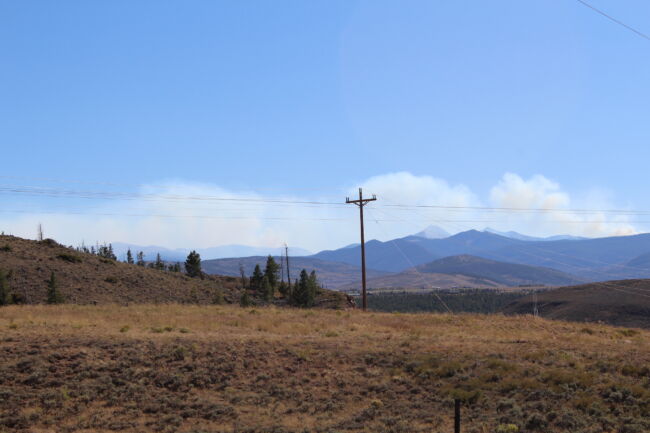
Closer to the plains, Loveland resident Curtis Lipkie, witnessed an accidental fire lit by construction work a half-mile west of his house in the foothills earlier this year. The Municipal Fire Department addressed the fire after 30 minutes. The effect of the bigger fires; however, had a lasting impression on Lipkie. The Cameron Peak fire was within 20 miles of his house, with Mullen close by. “We get the first wave of smoke on the way down to the metro area,” Lipkie said.
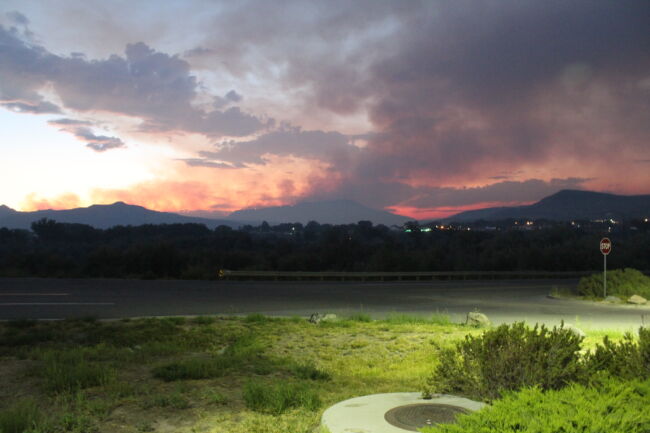
“The sky was orange and red,” Lipkie said. “you would see these things falling from the sky and you would see pine needles, all these pine needles. You would try to pick them up and they would disintegrate in your hand.”
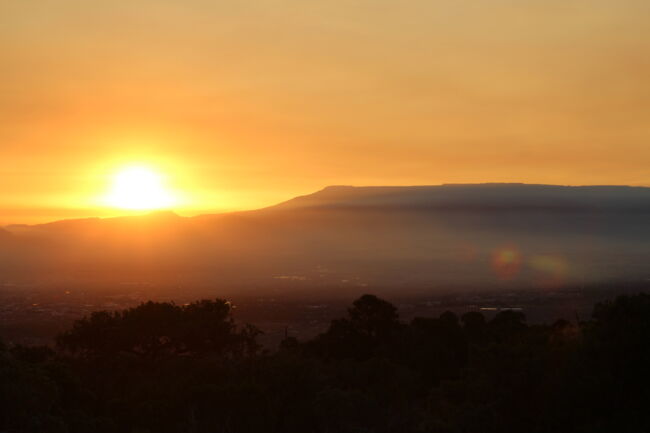
The pine ash rain characterized by Lipkie is caused by the fire system, smaller particles have noticeable effects on Lipkie’s health, and The Colorado Department of Health and Environment regularly issues warnings for air quality.
“My chest is congested, I got a little cough going on, I don’t go outside unless I really have to. Even picking up my grandson at the grade school which is three blocks away, I drive my car down. It [the smoke] even comes into the house and it will wake us up. Even though we have the windows closed it still gets in,” Lipkie said.
Richard Dziomba, recounts his golf outing Oct. 9, 2020 in Louisville with similar respiratory effects; haze burning his eyes and lungs. Dziomba, a former Summit County Planning Commissioner and former director of the Blue Knight Group shared his experiences with taking a proactive stance in fighting wildfires.
He was first appointed as the Summit County Planning Commissioner in 2006. “It [planning] was the growth of Summit County, height restrictions, taking into account housing, affordable housing, allowing for our growth, making sure the tax revenue was there, growth of businesses and zoning.”
Summit County’s mountain towns including Breckenridge and Frisco grew into the forests. The plethora of planning issues were now Dziomba’s concerns; how to get fire trucks, ambulances, first responders up dirt roads which single occupancy vehicles have no issue with. The infrastructure investments also had an effect on taxes which needed to be considered. “Fires became a big deal,” Dziomba said. “A dozen houses go up and you wonder how to protect them.”
Dziomba explored the root causes of the wildfires and looked to address the problem for the future. Beginning to use his 401k he earned working at NCR, he attended seminars, meetings and roundtables. Eventually, he founded the Blue Knight Group, a 501(c)3 nonprofit organization in 2009.
“[The name arose from] Blue being the tinted wood, Knight because I was tired of being a pawn and the Group being […] climate change activists, environmentalists as the board of directors,” Dziomba said.
Dziomba was finding or creating supply branches of markets; logging mills, outlets for high quality beetle kill furniture and biomass fuel. The difference of a wildfire’s emissions and controlled biomass environments is significant and has less of an effect on human and wild environments. He had Xcel energy willing to switch to burning biomass from coal, using wood pellets to create energy and heating. He had University of Denver creating business plans for him on different localized sites, Colorado School of Mines analyzing data for safe logging pitches and Colorado State University analyzing the environmental impacts. His business looked to create breaks – clear cutting forests in or near high risk zones.
Dziomba emphasized the forests have to be looked at as a business — utilizing the forests before the wildfires destroy them. He noted Federal management agencies were not as open to new ideas as the state and municipal levels.
“I just found myself banging my head against the wall with the US Forest Service and US Department of Agriculture, ‘You guys are not looking for solutions. You show up to these meetings for the sake of showing up to these meetings and seriously all the money allocated to you is spent fighting these fires.’ They admitted it and they don’t want to change the way they look at things,” Dziomba said. In 2014 he needed to make money again and returned to consulting as his full-time job.
The wildfire series is intended to explore environmental systems in depth and detail to understand the past, present and future of natural disasters.

